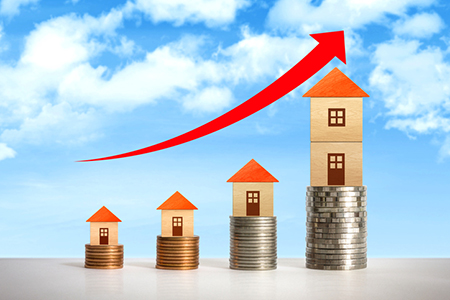Home prices tracked up in the latest S&P CoreLogic/Case-Shiller Indices, up 6.2 percent year-over-year in September, compared to 5.9 percent in August. Conditions as they are are prompting the rise.
The S&P CoreLogic Case-Shiller U.S. National Home Price NSA Index’s 10-City Composite rose 5.7 percent year-over-year, up from 5.2 percent in August, while its 20-City Composite rose 6.2 percent year-over-year, up from 5.8 percent in August. Month-over-month, the 10-City Composite and the 20-City Composite both rose, 0.5 percent and 0.4 percent, respectively.
Of the 20 cities analyzed, Las Vegas, Nev., San Diego, Calif., and Seattle, Wash., came out on top, with prices up 9.0 percent year-over-year in Las Vegas, 8.2 percent in San Diego and 12.9 percent in Seattle.
“Most economic indicators suggest that home prices can see further gains,” says David M. Blitzer, S&P Dow Jones Indices chairman of the Index Committee and managing director. “Rental rates and home prices are climbing, the rent-to-buy ratio remains stable, the average rate on a 30-year mortgage is still under 4 percent, and at a 3.8-month supply, the inventory of homes for sale is still low. The overall economy is growing, with the unemployment rate at 4.1 percent, inflation at 2 percent and wages rising at 3 percent or more. One dark cloud for housing is affordability—rising prices mean that some people will be squeezed out of the market.”
“Home prices, after multiple years of fast growth, still show no signs of cooling because of the ongoing housing shortage in much of the country,” said Lawrence Yun, chief economist of the National Association of REALTORS® (NAR), in a statement on the Indices. “The latest Case-Shiller price growth of 6.2 percent on a nationwide basis marks the strongest rise in over three years. This fast appreciation over income growth is not sustainable over many years.
“Housing demand is clearly rising from the improving labor market, but supply is still not kicking higher,” Yun said. “Homes for sale are quickly going under contract, and overall existing inventory has fallen for 29 consecutive months (on a year-over-year basis). Either demand will be choked off from weakening affordability, or more robust construction needs to take place to calm home prices. The latter is the much preferred outcome, and would be a win for homebuyers, a win for home builders and win for faster economic growth.”
Source: S&P Dow Jones Indices
For the latest real estate news and trends, bookmark RISMedia.com.




